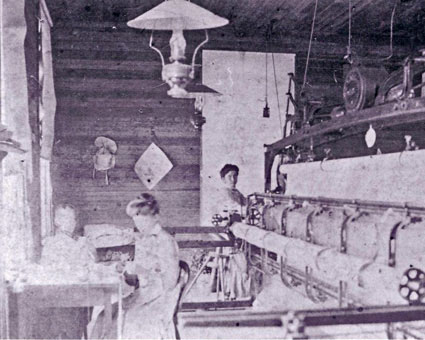While a British citizen might describe a Victorian structure as "new," most Long Islanders would envision an "old building" as one which predates 1970.
 The area known today as the Five Towns is fortunate to have a number of historic buildings - homes, schools and stores -- which date back to the early Twentieth Century and some much older. Many of the original Victorian "cottages" in Lawrence's Isle of Wight still retain their original character. The original Brower homestead at 989 East Broadway in Woodmere is one of the oldest in the area. Although it has been modernized, property records date it back to 1763. Rock Hall in Lawrence, an ancestral home of the Hewlett family, is museum of colonial life administered by the Town of Hempstead. And the Hewlett Homestead at 86 East Rockaway Road in Hewlett was the home of many members of the Hewlett family from 1749 until 1986.
The area known today as the Five Towns is fortunate to have a number of historic buildings - homes, schools and stores -- which date back to the early Twentieth Century and some much older. Many of the original Victorian "cottages" in Lawrence's Isle of Wight still retain their original character. The original Brower homestead at 989 East Broadway in Woodmere is one of the oldest in the area. Although it has been modernized, property records date it back to 1763. Rock Hall in Lawrence, an ancestral home of the Hewlett family, is museum of colonial life administered by the Town of Hempstead. And the Hewlett Homestead at 86 East Rockaway Road in Hewlett was the home of many members of the Hewlett family from 1749 until 1986.George Hewlett, the first Hewlett to settle in this area, was born in England in 1634. He was part of an English community which emigrated to Long Island - by way of Connecticut - and negotiated treaties with the Dutch governors and native inhabitants to establish a population center in what is now Hempstead. According to his descendant, Charles W. Hewlett, the family soon established several farms along the wagon trail that stretched from today's Broadway (once an Indian trail) to Near Rockaway (today's East Rockaway).
Photographs of the Hewlett house taken c.1984.
 The site of George Hewlett's original home, was alled "The House at the Head of the Vly," and was situated at the head of George's Creek near Willow pond in present-day Hewlett Bay Park. After George's death, his grandson Daniel lived in the house until his purchase of Richard Green's farmhouse (the current Hewlett house) and its surrounding two hundred acres of land. At the time the Green property was surrounded by woods. Joel Morris writes:
The site of George Hewlett's original home, was alled "The House at the Head of the Vly," and was situated at the head of George's Creek near Willow pond in present-day Hewlett Bay Park. After George's death, his grandson Daniel lived in the house until his purchase of Richard Green's farmhouse (the current Hewlett house) and its surrounding two hundred acres of land. At the time the Green property was surrounded by woods. Joel Morris writes:The Hewletts were a large and influential family in 19th and 20th century Long Island. As farmers, dry goods merchants, members of Trinity Church, and Nassau County's early Republican party, Hewletts were active in the Branch communities. This culminated in Augustus Hewlett's 1897 donation of land for the renamed Hewlett railroad station, which in 1893 had been changed to Fenhurst.No public road led to the house. An immense gate on the Rockaway main highway opened to an inviting lane which, flanked by the tall trees on either side, led to the house and farm buildings. (p. 14).
 |
| Nassau County Historical Society Journal (1966), p.12 |
Controversy has surrounded the property since the death of Cerecies Hewlett as family, community and government try to determine the best course for its management and preservation. Since 2001, the Hewlett house, designated a local landmark by the Town of Hempstead, has been the home of 1 in 9: the Long Island Breast Cancer Action Coalition.
May is National Preservation Month. This is a wonderful opportunity for groups and individuals to show their concern for our local history and the buildings that reflect our past. Let others know which places matter to you!
Further Information: (some links may require H-WPL Library card login.
- Hewlett, Charles W. The Story of the Heritage of the Rockaway Peninsula and the Adjoining Five Towns, 1965.
- Morris, Joel J. "The Hewlett House, 1749-1984: A Family History," Nassau County Historical Society Journal, 1996, pages 13-18.
- Preservation Month - May 2016: This Place Matters
- National Parks Service: National Register of Historic Places
- Monahan, Sharon."Hewlett asks aid to save old house." New York Times, November 1, 1987, p. 12.
- Whittle, Patrick, "District, community at odds over organic garden," Newsday, November 20, 2012 (Newsday.com)





















